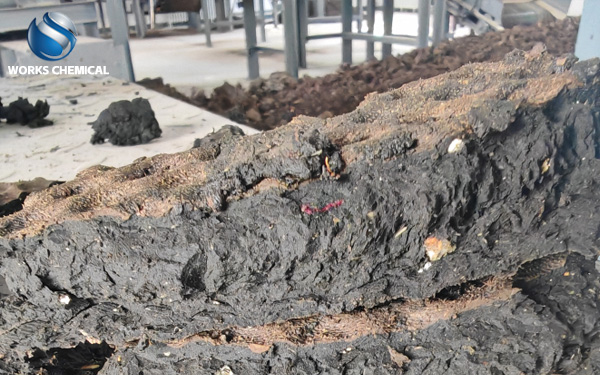
When choosing a sludge conditioner on the market, a number of factors need to be considered to ensure that the selected sludge conditioner can treat the sludge efficiently, economically and environmentally friendly. Here are some key selection steps and considerations:

First, understand the type of sludge conditioner
Sludge conditioner mainly includes the following types:
Flocculant:
Common types: polyaluminum chloride (PAC), polyacrylamide (PAM, divided into anionic type, cationic type, non-ionic type) and so on.
Action principle: Promote the small particles in the sludge to aggregate into larger flocculent, improve the dewatering performance of the sludge.
Application scenario: Widely used in life, printing and dyeing, paper making, electroplating, chemical industry, leather and other industries of sludge treatment.
Dispersant:
Principle of action: disperse the particles in the sludge, avoid the formation of clumps, and improve the fluidity and mixing of the sludge.
Application scenario: In a specific process, it is necessary to maintain the dispersion of sludge particles.
pH regulator:
Common types: acid regulators (such as sulfuric acid, hydrochloric acid) and alkaline regulators (such as sodium hydroxide, calcium hydroxide).
Principle of action: Adjust the pH value of the sludge to make it in the appropriate range to promote the flocculation or dispersion of the sludge.
Application scenario: Processing sludge with abnormal pH value.
Oxidant:
Principle of action: oxidize organic matter in sludge to promote its degradation and stabilization.
Application scenario: Treatment of sludge with high organic content.
Settler:
Common species: ferric sulfate, ferric chloride, etc.
Principle of action: accelerate the sedimentation rate of particles in the sludge and improve the sedimentation efficiency.
Application scenario: The need for rapid sludge settling.
Sludge dehydrating agent:
Common types: inorganic salt compounds such as polymeric iron and polymeric aluminum.
Action principle: Through chemical action to change the surface structure of the sludge and water distribution, improve the dewatering performance of the sludge.
Application scenario: sludge dewatering treatment in various industries.
Biological conditioner:
Principle of action: The use of microorganisms to decompose the organic matter in the sludge, improve the dewatering performance of the sludge.
Application scenario: Suitable for the scene with more biological treatment processes, environmental protection, no secondary pollution, but the treatment time is long.
Two, according to the nature of sludge selection of conditioning agent
Sludge composition:
High organic content: It is recommended to use cationic flocculants, and the higher the organic content, the higher the degree of polymerization should be used.
Inorganic matter based: can consider the use of anionic flocculant, the price is relatively more affordable.
Sludge pH value:
Different flocculants have different effects on sludge treatment with different pH. For example, the hydrolysis reaction of aluminum salt is greatly affected by pH, and the optimal pH range is 5 ~ 7; Ferric salt conditioner is less affected by pH, and the optimum pH range is 6 ~ 11.
Sludge moisture content:
The main purpose of sludge conditioner is to improve the dewatering performance of sludge and reduce the moisture content of sludge. Therefore, when selecting the conditioner, it is necessary to consider its dewatering effect and influence on the moisture content of the sludge.
Three, considering process requirements and economic costs
Sludge treatment process:
Mechanical dewatering process: flocculant and sludge dehydrant may be a better choice.
Natural drying bed: acid-base conditioner and biological conditioner may be more suitable.
Economic cost:
Agent cost: The price of different types of sludge conditioners varies greatly, and the appropriate agent needs to be selected according to the treatment scale and budget.
Operation cost: including dosage of medicine, equipment energy consumption, labor cost, etc. It is necessary to consider various factors comprehensively and choose cost-effective sludge conditioner.
Four, test to determine the best drug type and dosage
Laboratory test:
The precipitation test can be carried out using a six-set mixer, and the optimal flocculant type and dosage can be determined by measuring the turbidity of the supernatant.
Sludge dewatering test can also be carried out to evaluate the influence of different conditioners on sludge dewatering performance.
Field test:
Tests are carried out on the actual sludge treatment site, and the type and dosage of agents are adjusted according to the treatment effect.
Pay attention to monitoring the indicators in the treatment process to ensure that the sludge treatment effect is stable and reliable.
Five. Consider other factors
Environmental requirements:
If a reduction in secondary pollution is required, a biological conditioner may be a better choice.
Need to comply with relevant environmental regulations and standards to ensure that the sludge treatment process meets environmental requirements.
Security:
When selecting sludge conditioner, it is necessary to consider its safety and stability. Avoid choosing agents that are harmful to the human body or are prone to explosion, fire and other dangers.
Technical support and after-sales service:
Choose a supplier with good technical support and after-sales service in order to obtain timely technical guidance and support during use.
Six, summary
When selecting the sludge conditioner on the market, it is necessary to consider the sludge properties, process requirements, economic costs, test results and other factors. Through scientific and reasonable selection and use of sludge conditioner, the efficiency and effect of sludge treatment can be improved, and the treatment cost and environmental risk can be reduced. It is suggested that in practical application, several groups of comparative experiments should be carried out according to the specific situation, and the reagents with low water content, low cost, small corrosion of equipment, and no or small increment of sludge should be selected.